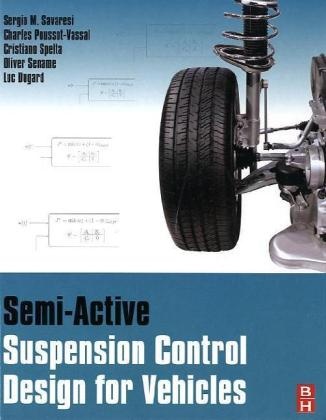Read more
Klappentext Semi-active suspension systems promise simpler designs, weight efficiencies, and cost savings compared to the active and adaptive suspensions currently in use. With the growing emphasis on fuel economy, reduced CO2 emissions, and cost reductions for all vehicles, these semi-active systems will be a growing part of overall vehicle design. Savaresi provides a comprehensive overview and treatment of semi-active suspension systems with an emphasis on performance analysis and control design. Several different approaches, using different control theories (either LPV or non-linear), are presented and evaluated. A methodology is presented to analyze and evaluate suspension performances while identifying optimal performance bounds. Two innovative semi-active suspension strategies to enhance either comfort or road-holding performances are highlighted and analyzed. Inhaltsverzeichnis 1. Introduction and motivations2. Semi-active suspensions technologies and models3. Suspension oriented vehicle models4. Methodology of analysis for automotive suspensions5. Optimal strategy for semi-active suspensions and benchmarks6. Classical control for semi-active suspension systems7. Mixed SH-ADD semi-active control8. Robust H LPV semi-active control9. Conclusions and outlooksAppendix A. Control methods comparisonsAppendix B. Case study
List of contents
1. Introduction and motivations2. Semi-active suspensions technologies and models3. Suspension oriented vehicle models4. Methodology of analysis for automotive suspensions5. Optimal strategy for semi-active suspensions and benchmarks6. Classical control for semi-active suspension systems7. Mixed SH-ADD semi-active control8. Robust H LPV semi-active control9. Conclusions and outlooksAppendix A. Control methods comparisonsAppendix B. Case study

